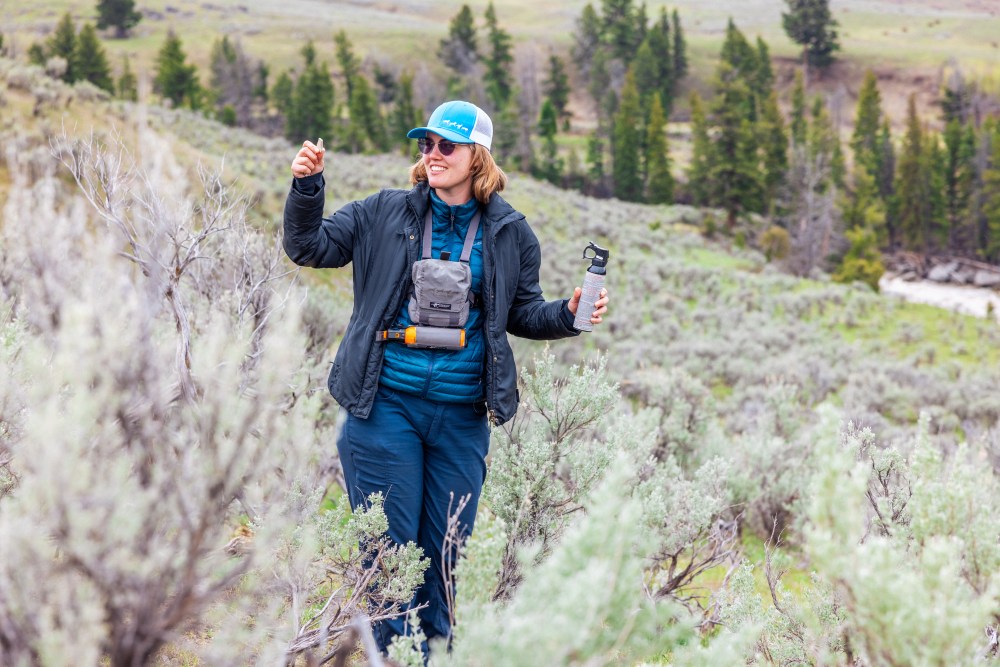Yellowstone Wildflowers: An Explosion of Color!

By YW Naturalist Aleksa B.
Spring and early summer in Yellowstone National Park is an absolute feast for the senses. With all manner of newborn animals on the landscape, flocks of migratory birds in the skies, and enough snow on the mountaintops to create stunning scenery, it’s a magnificent time of rebirth. Beginning with the early parts of peak season and continuing into early fall–with eyes on the animals, thermal features, and the incredible views–many visitors walk right past some of Yellowstone’s greatest treasures: its wildflowers!
Throughout the progression of seasons, different flowers emerge from the soil, creating a colorful tapestry that only visitors with their noses to the ground will notice. If the excitement of summer’s floral explosions of color is for you, these details can help you plan your visit to coincide with the peak bloom times.
As spring begins to loosen winter’s grip on the landscape, the sagebrush buttercup makes its entrance as on of the very first blooms of the season. From late March into April, in the open sagebrush flats, these tiny yellow flowers are a sure sign that the seemingly endless winter is finally over. They disappear nearly as quickly as they spring up, and most are gone by May. While exciting to see the bright splash of yellow among the dulled browns and grays of the winter sagebrush steppes, it’s important not to touch or eat these plants. Many members of the buttercup family are mildly toxic and may cause skin irritation if touched or gastrointestinal issues if ingested.
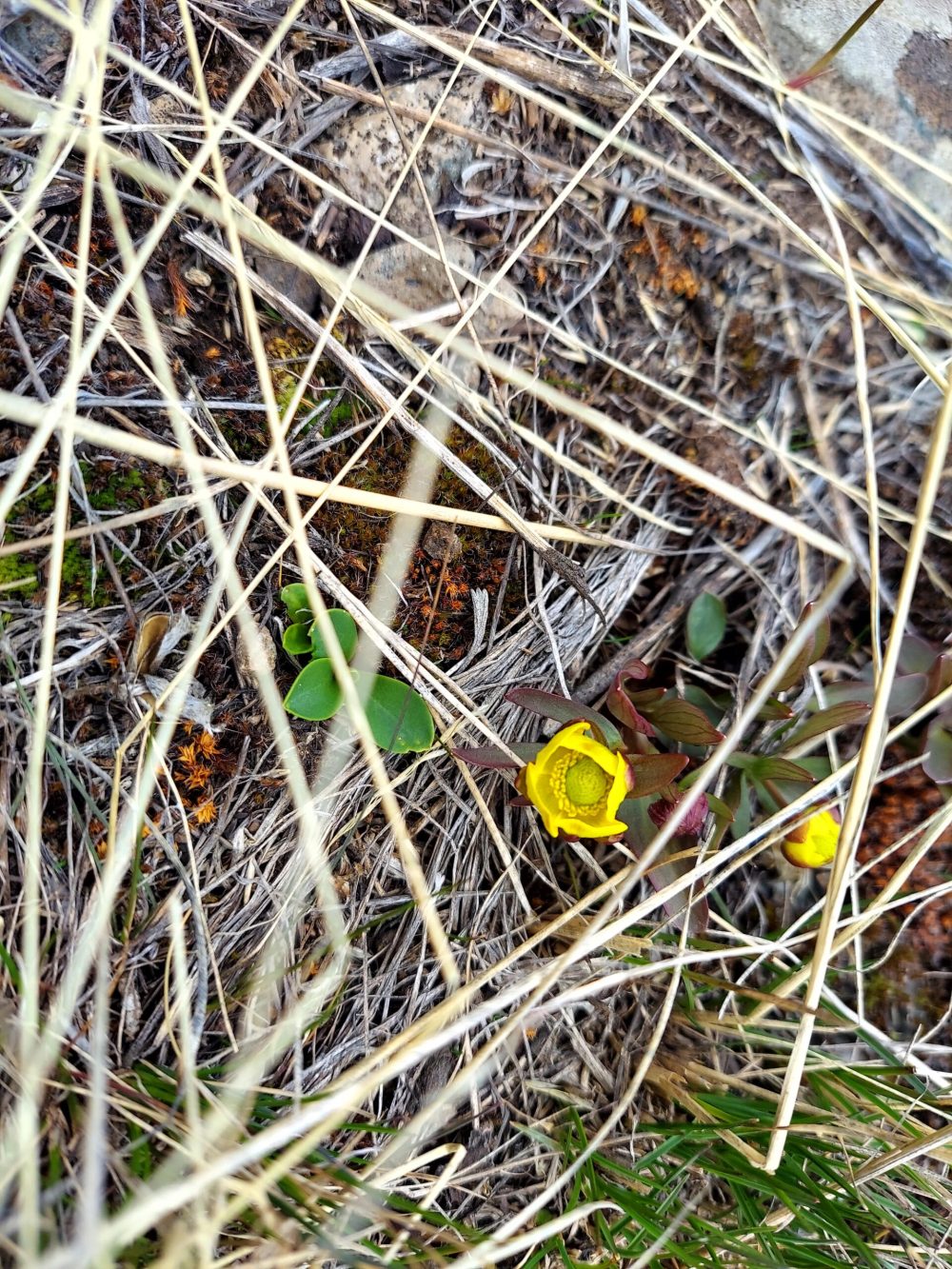
You might just miss this unassuming bloom–a sure sign of spring–if you’re not careful! Photo by YW Staff
Another favorite early spring flower we see is the shooting star, a plant with an unusual appearance. Its petals are a striking bright pink, and its stamens (the pointy center of the flower) are yellow and burgundy. These plants thrive in either moist areas or dry sagebrush flats, depending on the exact species of shooting star and can be found in an enormous variety of shades of pink! You can expect to see these striking flowers from late April into June in most northern areas of the park.

These unique petals make the shooting star look as if it is inside-out. Photo courtesy of YW General Manager Tyrene R.
A personal favorite plant of mine is one that primarily grows in the central and southern regions of the park (although it can be found parkwide in suitable habitats). The glacier lily has several yellow blooms that delicately dangle from their stems, like something out of a fairy tale, and thick, glossy leaves that shine in the sunlight. Glacier lilies appear around mid-May and can bloom in cooler canopied areas throughout most of the summer. The corms of these beauties are a common food for grizzly bears looking to fatten up after emerging from winter dens. Humans often enjoy the slightly sweet flower raw, although all parts of the plant are edible (beware of mild reactions for those with pollen sensitivities) and can be boiled, dried, fresh.
With all of these bright flowers on the landscape, it can be refreshing to see one of a moodier, darker persuasion. The sugarbowl (also known as hairy clematis), which blooms in a similar window to the glacier lily, fills that niche perfectly. These pendulous purple flowers appear heavy and robust compared to the thin leaves from which they emerge and are covered in fine, fuzzy hair. Look for these plants in sunny open meadows, and prepare to be enchanted by them!
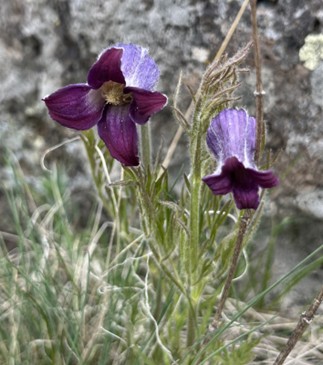
Sugarbowl, or hairy clematis, blooms droop on the edge of a meadow near Slough Creek. Photo courtesy of Aleksa B.
The quintessential flower of summer in Yellowstone is the silvery lupine. Silvery lupine blooms are tall spikes of light purple flowers that cover the sagebrush-dominant landscape in a sea of lavender every year. The name “lupine” originated from the Latin name for wolves, as the common thought was that lupine plants stole nutrients from the soil, much like a wolf might steal sheep at night. Just like wolves, however, the lupine is misunderstood and has a significant role in the ecosystem. Being in the same family as peas, lupines enrich the soil with nitrogen as they grow and are an important food source for bees, butterflies, and hummingbirds. It won’t be hard to spot these flowers if you visit Yellowstone on summer break, so make sure to enjoy their beauty in every open prairie you come across. Humans, livestock, and pets should never eat the seeds, stems, or leaves of silvery lupine as they are toxic when ingested.
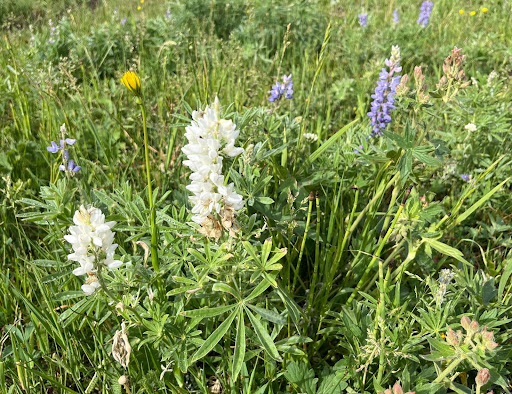
Most silvery lupine flower spikes are light purple, but I stumbled across this white one in Round Prairie in 2024. Even some of the most common flowers can surprise you! Photo courtesy of Aleksa B.
Harebells are another plant that looks straight out of a book of nursery rhymes. These small, light purple flowers are delicately bell-shaped and always remind me of a hat for a small creature. One of the best things about harebell blooms is that they are edible! When popped into your mouth, they have a very lightly sweet flavor and make a great hiking pick-me-up. Look for the harebell in sunny, open areas from June to September.
Through the hottest part of summer into fall, we see the fireweed come to life in Yellowstone. As lovers of disturbed soil, you will see these plants most often along the sides of the road or, as the name implies, in areas that have recently burned by wildfire. Rich in Vitamin C, this plant is a favorite for bears and other wildlife and it’s a treat for humans too! People all over the world eat fireweed in various forms, making jelly from the petals, tea from the leaves, and even eat the roots raw! These vibrant flowers can soar up to nine feet above the ground when they are in good health. Towering above the other vegetation in most meadows, these flowers are both widespread and spectacular.
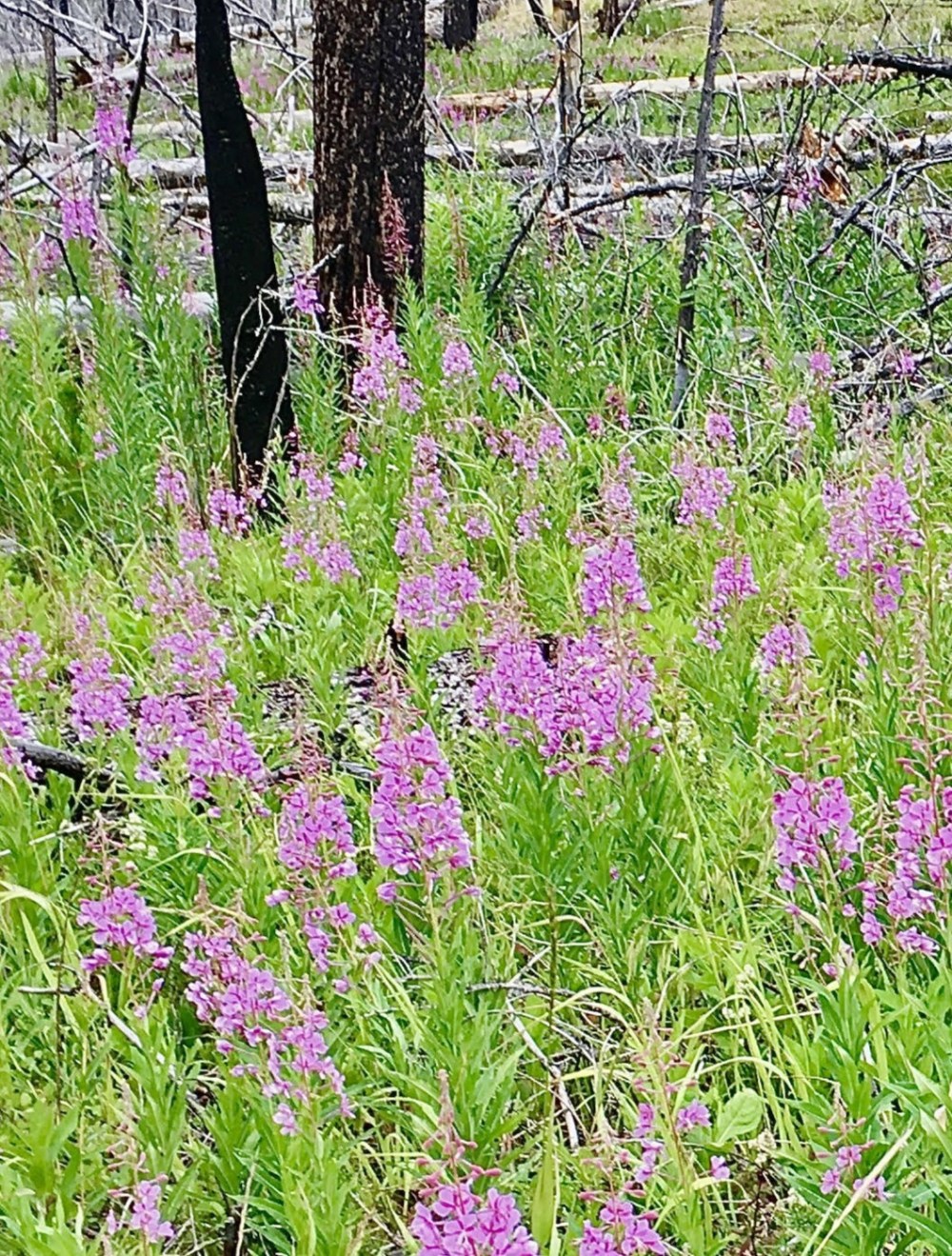
As the name implies, fireweed is commonly seen in post-burn (or otherwise disturbed) areas. Photo by Tyrene R.
From spring through fall, there are dozens of beautiful wildflowers to enjoy in Yellowstone National Park. If you’re here to enjoy the wildlife, waterfalls, or thermal features, be sure to stop and take a moment to appreciate the scenery at your feet. An explosion of color (and a new favorite plant) might be right between them!
Written by YW Naturalist Aleksa B.
To learn more about Aleksa, and the entire Yellowstone Wild team, check out our About Us page



